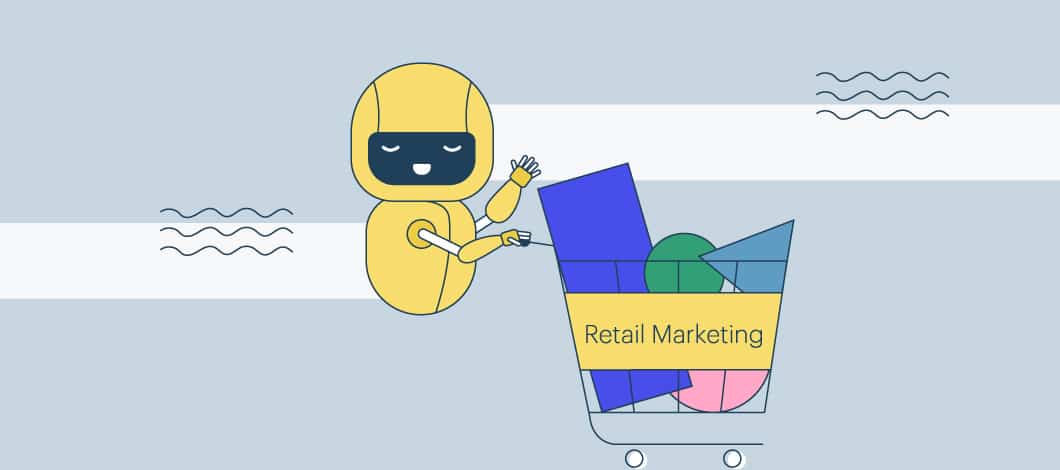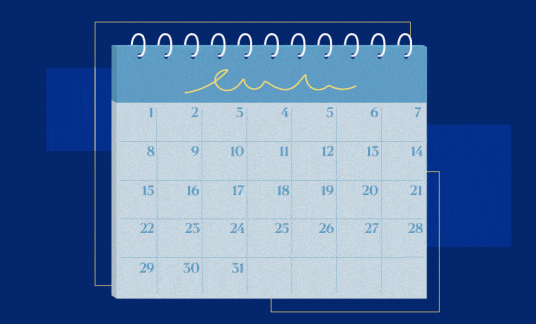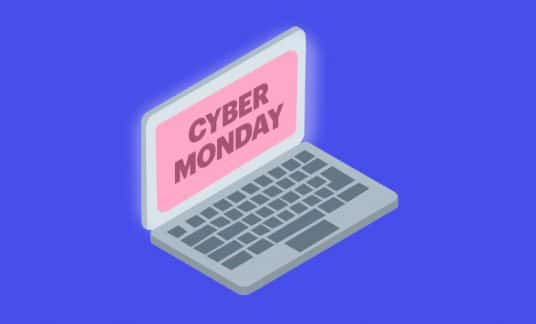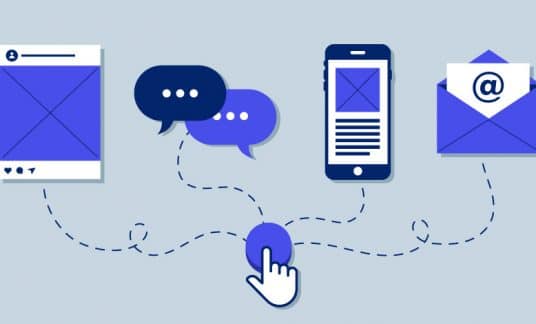These days, retail marketing strategy doesn’t stay within the 4 walls of your brick-and-mortar location. Even if you don’t have an ecommerce component to your business, some of your marketing strategies need to be online. It’s the world we live in.
Especially now, as the pandemic keeps more people at home, either shopping online or at the very least, doing more product research before heading out. After all, their minds are already made up where to go.
What Is a Retail Marketing Strategy?
Marketing strategies in retail sector need to do 1 of 2 things:
- Attract new customers, or
- Drive sales
Whether it’s retail digital marketing or retail store marketing, your strategy should include what’s known as the 4 Ps:
- Product: What you sell.
- Price: Can be the price of a single item you sell, or your overall pricing strategy. For example, Walmart is known for “rollback” prices (frequently lowering prices).
- Promotion: What you do to advertise or otherwise let people know about your store, sales or products.
- Place: Where you’re selling, either an in-person shop or online, or both.
Each of these factors into your long-term marketing plan. They also apply to an individual strategy or campaign, such as each of the ideas below.
9 Surefire Retail Marketing Strategies
1. Go All In on Social Media
If you’re going to be on social media, then be on social media. On Instagram, for example, don’t simply post a few static photos to your feed and leave it at that.
You need to maximize the possibilities of each platform to see the best results. Use Instagram Stories, shoppable posts, run customer polls in Stories and connect your ecommerce shop to the new Instagram Shop profile feature.
Out of Instagram’s 500 million daily active users, 400 million watch Stories every day, according to research by Statista.
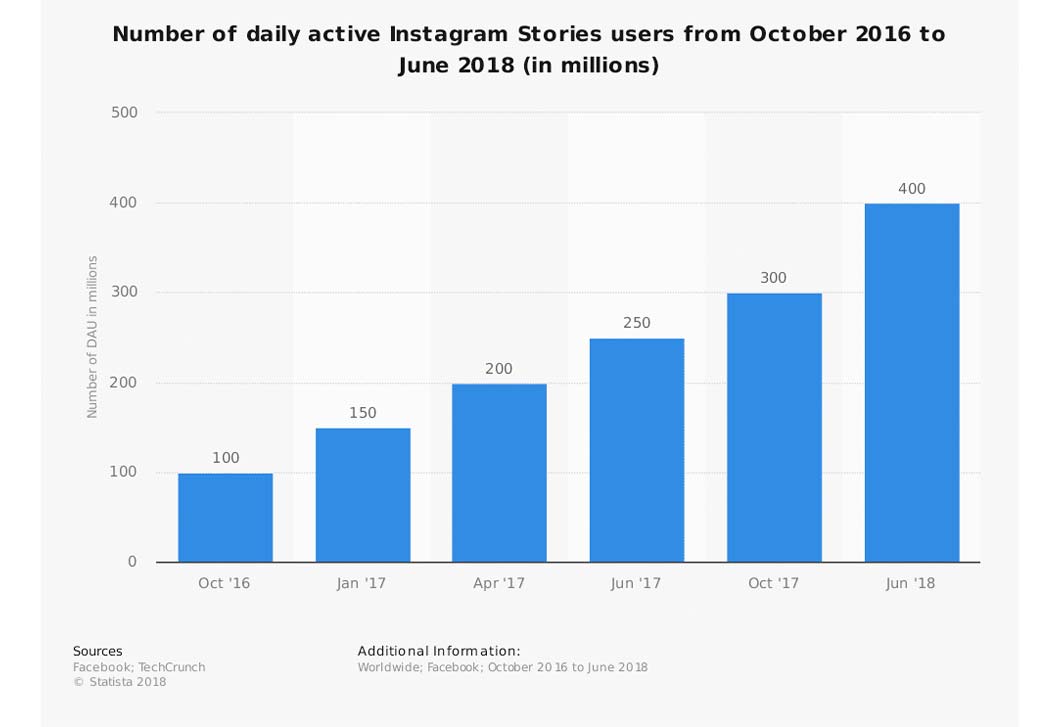
Running an Instagram Stories campaign earned Gap a 73% higher click-through rate and lifts of 4 points for message association and 11 points for ad recall compared to previous Instagram feed-only campaigns.
Don’t think you can get away with just the basics on social media anymore. Invest some time in utilizing all of the content possibilities each platform offers.
2. Try Google Shopping Ads
Google Shopping is like Google Ads for ecommerce. It uses information from data feeds to show products related to a user’s Google search, like this one shown below for “brown leather wallet.”

Google realized I typed in something that I’m probably interested in buying, so it found some good matches from stores with Google Shopping campaigns. It shows those to me in the first row of results.
This can be a powerful way to attract new business, since there are 3.5 billion searches per day on Google alone, according to Internet Live Stats.
To start using Google Shopping ads, you need to have both a Google Ads account and a Google Merchant Account. Google has an in-depth guide to creating your first campaign.
3. Advertise on a Podcast
Podcasts are growing in popularity, with 55% of Americans listening to at least one podcast in 2019, according to Edison Research.
Most podcasts offer ad spots, ranging from simple shoutouts to full series sponsorships. You can approach your favorite podcasts directly or go through a podcast advertising agency or platform such as AdvertiseCast.
Finding the right podcast to advertise on has everything to do with knowing your target market well and what they listen to.
4. Update Your Window Displays at Least Once a Month
This one is easy for all retailers to implement. Keeping your window displays current makes your store look fresh and inviting, even to repeat customers who will think you always have something new going on inside.
Of course, it also is a good opportunity to work in seasonal or holiday elements. More than that, window displays are an excellent way to connect to your local community.
During the coronavirus pandemic, there has been a push to shop local and support small retail businesses that are struggling more during this time. A way to thank your community for their support is to send a simple thank you message with your window display, such as this example from Washington, D.C., featured on point-of-sale company ShopKeep’s blog.
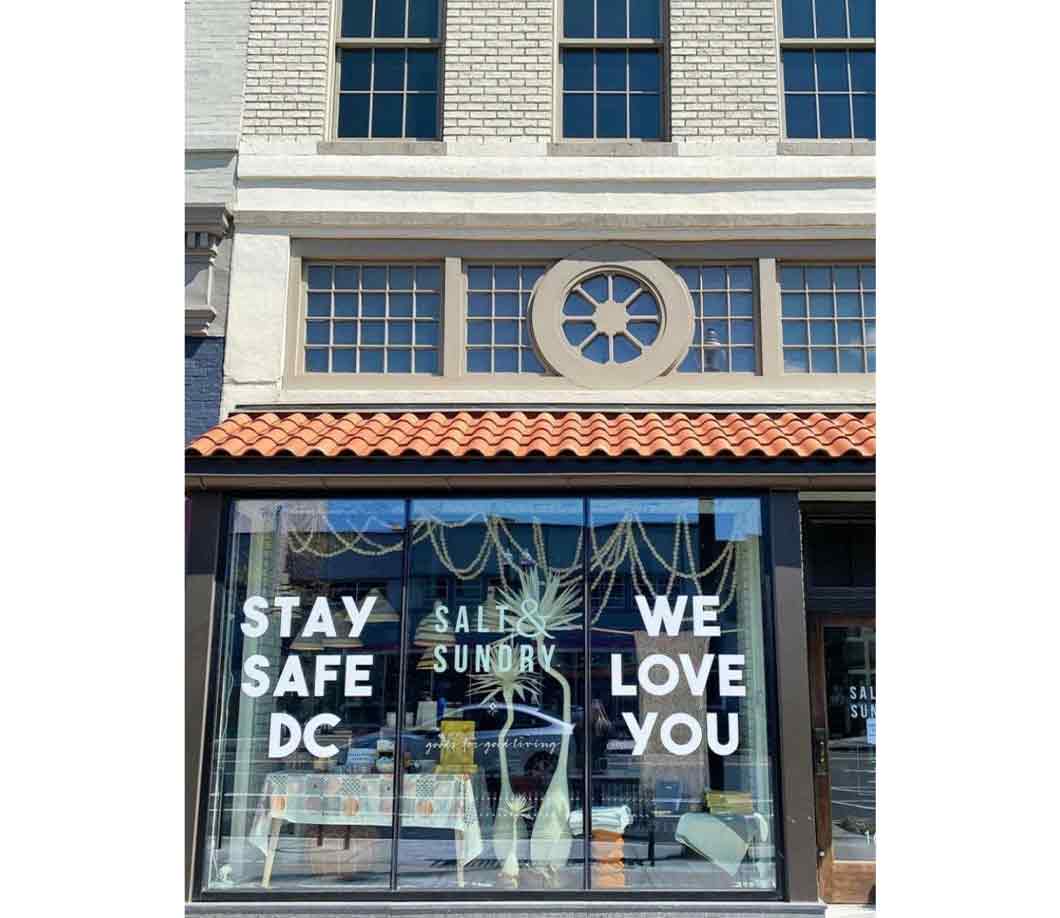
5. Review Your HR Practices and Benefits
Yes, human resources can count as marketing. It goes without saying that happy employees create happy customers.
Beyond that, more than ever, consumers want to support businesses that agree with their values and overall do good in the world. About 70% of consumers want to know specifically how the companies they buy from are supporting social and environmental well-being, according to a study by Markstein.
A famous example of HR as marketing is Starbucks. The company’s widely-publicized employee benefits include paid parental leave, competitive 401(k) plans, high quality medical insurance, tuition reimbursement and more. That’s for everyone from a part-time barista to upper management.
Offering these kinds of benefits seems expensive, but it’s just as much about marketing as it is about recruiting.
By offering these benefits, Starbucks:
- Motivates employees to create great customer experiences.
- Backs up their public commitments to do good, and uses their benefits in marketing materials all the time.
- Attracts high-quality talent.
- Is seen as a positive addition to local communities.
- Positions themselves as socially responsible and that makes customers feel good about buying from them.
6. Partner With Other Brands
Strategic partnerships can further cement your position in the community as well as draw in a new crowd.
But who should you partner with?
A few ideas:
- A complementary store in the same mall or street as you, that doesn’t sell the exact same type of products as you but something your audience would be interested in.
- For example: A beauty-product store and a salon, or a clothing retailer and a shoe store, etc.
- A local charitable organization.
- A local artist or maker.
Another strategy is to partner with a company with a perceived higher value or prestige than yours. Fashion retailer H&M is known for doing this all the time with celebrity fashion designer partnerships.
It started in 2004 with a collaborative line designed by the legendary fashion designer Karl Lagerfeld. After much media hype, the entire product line sold out within minutes. H&M describes their celebrity partnerships as, “Bringing couture to the high street.”

H&M continues to partner with high-end brands that would otherwise be out of reach for its middle-class clientele. The result is an elevated status and die-hard fans eager to snap up the latest couture-inspired collections when new collaborations are announced.
7. Revise Your Email Marketing
Whether you have an ecommerce site, you still need an email list.
Email is the most effective way to reach your customers especially when you invest in segmentation and personalization.
Segmentation means creating subsections of your list for different groups of people. It could be based on location if you have more than one shop location. That way, you can send targeted promotions valid at one store to only the people around that geographic area, keeping your emails relevant to those who receive them.
Segmentation also can be for types of customers. You could have a list for new customers (purchase within the last 30 days), lost customers (haven’t made a purchase in 6 months), returning customers (made a purchase after a long period of inactivity), or hasn’t purchased yet (signed up online, hasn’t ordered, etc.).
By knowing exactly what group you’re talking to, you can address their unique pain points.
For example, by knowing you have a list of customers who haven’t purchased in 6 months, you can create a “We Miss You!” campaign to win them back. Include a 20% coupon or some other enticing benefit. Simply sending a quick campaign like this can earn you several thousand dollars of sales you wouldn’t otherwise have gotten.
In order to create and maintain segments like these, your store’s payment processing software needs to connect to your email software. Popular options such as Square Payments have direct integration with email marketing platforms like Mailchimp, and many others.
8. Use Influencers
Influencer marketing isn’t going away anytime soon. Typically found most often on Instagram, hiring a popular influencer or even micro-influencers to promote your store can pay off.
You can do a simple photo or video post in exchange for product or payment to an influencer, or organize a try-on session or in-store demo. For this, the influencer visits your store, tries on several looks and records the experience to share with their followers, typically on Instagram Stories, TikTok or other video-based methods. This works great for fashion brands.
You can offer the influencer a coupon code to share with their followers. The influencer can give their audience a unique discount and also earn a percentage of the sales made with that code as a commission (typically 5%-10%, but that’s up to you).
9. Create a Referral Program
Referral or affiliate programs are an excellent retail marketing strategy to implement for immediate results. Since you don’t have to pay the referrer until the new customer has already paid you, it’s basically free marketing.
Common structures for a referral program are to get your existing customer to offer a set dollar amount or percentage off to new customers, such as 10% off everything or $50 off their first order.
From that, you can choose to pay the referrer whatever reward you feel is suitable. For example, Hunter Boots gives you a 20% coupon to send to others and for each person who makes a purchase, gives you $15. It’s straightforward and it works.
Set Your 2021 Up for Success
Remember, you don’t need to do everything on this list or even more than 1 thing right away. Pick something easy for you to get started with and go from there.
Retail marketing has never been more important as the effects of 2020 will be long-lasting on the industry. With the right retail marketing strategies, smart companies can stay relevant, attract new customers and garner the support of their local community in 2021 and beyond.



